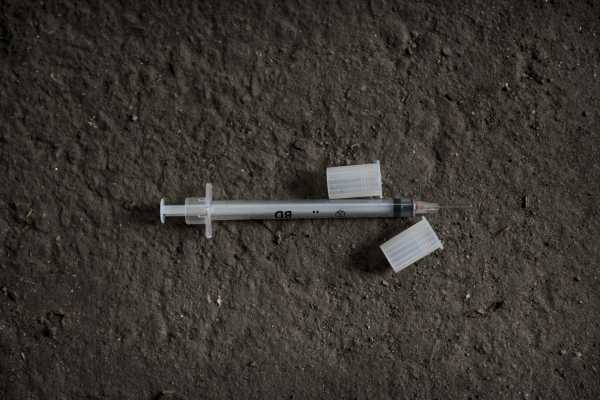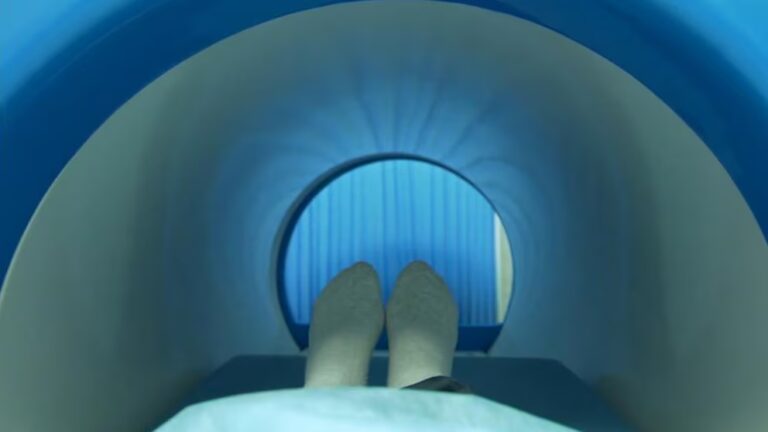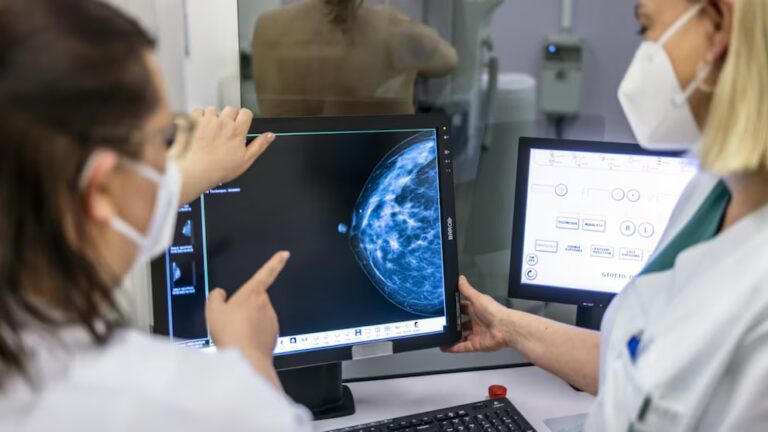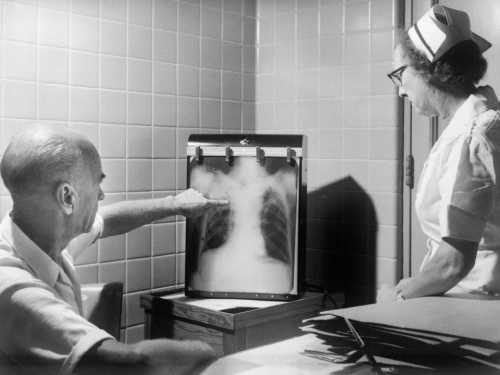
American cities are slowly rallying around a new response to the opioid epidemic: safe spaces for using heroin.
The concept recently gained traction in Philadelphia, where officials announced this week that they intend to open such a space, known as a supervised drug consumption facility or safe injection site. These are places where people can use drugs with sterile injection equipment and the supervision of trained staff, who are ready with the opioid overdose antidote naloxone if anything goes wrong. The sites may also link people with addiction treatment on request.
The idea: While in an ideal world no one would use dangerous and potentially deadly drugs, many people do. So it’s better to give these drug users a space where they can use with some sort of supervision. It’s a harm reduction approach.
And here’s the thing: Studies consistently show that supervised consumption facilities work. These kinds of sites have opened in Canada, Australia, and Europe, showing drops in drug overdoses, related emergency care calls, risky behaviors that lead to HIV or hepatitis C transmissions, and general public disorder and nuisance associated with drugs.
Yet the facilities remain highly controversial in the US. After decades of the war on drugs, much of America’s drug policy is colored by a criminalized, stigmatized approach to addiction — one that demands shunning and shutting down all drug use, and trying to make sure that nothing is perceived as even remotely enabling or allowing drug use. Under this view, the idea of giving people a safe space to use drugs seems downright counterintuitive.
Several places across the US, however, are currently moving forward with supervised drug consumption facilities — backed by a strong, growing evidence base, and driven to stop the deadliest drug overdose crisis in American history. In 2016, nearly 64,000 people died of drug overdoses in the US — a record high — and at least two-thirds of those deaths were linked to opioids, including heroin and illicit fentanyl.
It’s under this context that cities are now considering trying just about anything to reduce drug overdose deaths and other drug-related harms, even if it means going against the kind of thinking that has been baked into US drug policy for years.
Multiple cities are now considering safe injection sites
Philadelphia is now angling to become the first city with a legally sanctioned safe injection site. The city is reportedly hoping to hear from potential operators of a facility. It’s not clear when such a site will open.
Philadelphia is not the first to move forward with a plan. Last year, Seattle announced plans for a supervised drug consumption facility, and allocated $1.3 million for it. But, as with Philadelphia, it’s not clear when Seattle’s facility will open.
Other cities are also considering such sites, including Denver; Ithaca, New York; New York City; and San Francisco.
It’s worth noting, however, that none of these cities would become the first to open a supervised drug consumption facility should they move forward with their plans, because unsanctioned facilities have been operating in the US for years. Some of the sites are makeshift, set up by drug users in areas where they commonly use drugs. At least one, though, is secretly run by a harm reduction group that provides other kinds of services to drug users — and this group’s work has been backed by some studies.
The idea faces several layers of resistance in the US, starting with federal opposition. In a statement about a proposal to open supervised consumption facilities in Vermont, the US Department of Justice, led by Attorney General Jeff Sessions, warned that the facilities “would violate federal law.” The Justice Department claimed in a statement, “It is a crime, not only to use illicit narcotics, but to manage and maintain sites on which such drugs are used and distributed.”
There’s also a widespread not-in-my-backyard (NIMBY) sentiment with these kinds of services. Essentially, people are worried that if a supervised drug consumption facility opened in their neighborhood, it would attract drug users to where they live, and that could cause a rise in general crime and social disorder.
Critics also worry that supervised consumption facilities would lead to more drug use, because they would remove a barrier — and perhaps some of the stigma — to drug use.
The Justice Department made this exact argument about Vermont: “Such facilities would also threaten to undercut existing and future prevention initiatives by sending exactly the wrong message to children in Vermont: the government will help you use heroin. Indeed, by encouraging and normalizing heroin injection, [safe injection facilities] may even encourage individuals to use opiates for the first time, or to switch their method of ingestion from snorting to injection, the latter carrying greatly increased risk of fatality and overdose.”
It’s no coincidence that the Justice Department is making this argument. Law enforcement officials are some of the biggest opponents of supervised consumption facilities — and these officials can be particularly persuasive for politicians at the local and state level, where police hold a lot of sway over any policy related to public safety. In Philadelphia, for one, a key turning point seemed to be Police Commissioner Richard Ross going from being, as ABC News put it, “dead-set” against supervised consumption facilities to “keeping an open mind if they can truly save lives.”
The research, meanwhile, is pretty clear on both the NIMBY and increased drug use concerns: They are wrong.
Safe injection sites are backed by the research
Researchers have been gathering evidence on safe injection sites for decades, since the first supervised consumption facility opened in Switzerland in 1986. Since then, studies have consistently found that supervised consumption facilities help cut down on drug-related problems, including overdoses and general public health and safety issues.
Drawing on more than a decade of studies, the European Monitoring Centre for Drugs and Drug Addiction (EMCDDA) in 2017 concluded that supervised drug consumption facilities led to “safer use for clients” and “wider health and public order benefits.” Among those benefits: reductions in risky behavior that can lead to HIV or hepatitis C transmission through shared needles, drops in drug-related deaths and emergency service call-outs related to overdoses, and greater uptake in drug addiction treatment, including highly effective medications for opioid addiction.
Despite concerns that the facilities would draw more drug users to an area and cause disorder, the research suggests, according to the EMCDDA, that these facilities lead to less public injecting and fewer syringes discarded in the area — both of which can benefit local communities. The facilities also weren’t linked to higher crime in Sydney, Australia, or Vancouver, Canada — and, in fact, were linked to reduced street disorder and encounters with police.
“These services facilitate rather than delay treatment entry and do not result in higher rates of local drug-related crime,” EMCDDA concluded.
Researchers at the Lankenau Institute for Medical Research in Pennsylvania conducted another review of the evidence for Philadelphia. They produced similar findings as the EMCDDA.
But they went further, developing models to quantify how many drug overdose deaths could be prevented and how much money could be saved with a supervised consumption facility in Philadelphia. They found that as many as 76 drug overdose deaths annually could be prevented, compared to the 907 people who died of an overdose in Philadelphia in 2016. And in terms of skin and soft tissue infections alone, the city would save as much as $1.8 million in hospitalization costs each year, according to the review.
It’s not just that supervised consumption sites provide a place where people can use drugs with trained staff ready to intervene in case something goes wrong. That’s part of it, but not the whole story. These spaces also give people a place where they can take their time as they use drugs. So clients can guarantee they’re using a new needle, make sure the dose they’re taking is okay, ensure they clean their skin before injecting, avoid pushing in any dirt with the needle, and so on — all of which can reduce not just the risk of overdose but other health problems related to drug use.
The sites can also be used, as the EMCDDA report indicated, to link people to addiction treatment.
Despite the evidence, a common refrain is that that these facilities simply would not work in the US, even if they work in Europe, Canada, and Australia.
The most illuminating evidence against this claim comes from studies that looked at an underground safe injection site in an undisclosed location in the US. The facility opened in September 2014, under the rationale that, due to the opioid epidemic, the group simply could not wait for bureaucratic approval or the legalization of supervised consumption facilities to act.
The executive director of the group put it in dire terms: “Too many of our people were dying every week, and if we waited until someone gave us permission we’d still be waiting and everyone we cared about would be dead.”
A team of researchers followed the facility, publishing two studies so far in the American Journal of Preventive Medicine and the International Journal of Drug Policy. They found that staff and drug users at the facility reported the exact same benefits from the site that were reported in other parts of the world.
Peter Davidson of the University of California in San Diego was unequivocal about his team’s findings: “The big takeaway from this research and all the data we have so far is that these kinds of facilities have a similar effect here in the United States as they do elsewhere: They reduce harms associated with drug use and they reduce social nuisance associated with drug use in the same way they do elsewhere.”
The US has a lot more room for harm reduction — and treatment
That years of research back this approach and that other wealthy nations around the world have successfully tried it for decades shows just how far behind the US is in its approach to drugs.
Consider needle exchanges, where people can get new syringes for drug use and discard used needles. These have been legally operating in parts of the US since at least the 1980s with proven track records. Yet much of America remains reluctant to allow needle exchanges at all.
A needle exchange program, based on the empirical evidence vetted separately by Johns Hopkins researchers, the World Health Organization, and the Centers for Disease Control and Prevention, should be one of the least controversial ideas in public health. For decades, studies have repeatedly found that needle exchanges help prevent the spread of diseases, such as HIV and hepatitis C, that can spread through used syringes, while not increasing overall drug use.
Yet in Lawrence County, Indiana, officials decided to end their program. That wasn’t due to any new scientific evidence. Instead, it seemed to be due to a wrong view that addiction is a moral failure rather than a medical condition — contrary to what most major medical organizations say. County Commissioner Rodney King, who voted against the program, told NBC News, “My conclusion was that I could not support this program and be true to my principles and my beliefs.” He quoted the Bible before casting his vote.
If parts of the US aren’t willing to accept even a needle exchange, it’s hardly surprising that there’s a struggle to get supervised drug consumption rooms up and running in much of the country, no matter how much evidence there now is for them.
The same applies to other policy interventions for the opioid epidemic. Naloxone is an opioid overdose antidote that can literally save lives, yet in many states it can be hard to get because it requires a prescription — a big problem when an overdose can kill someone or do serious damage in minutes. Prescription heroin programs allow people to obtain a safe source of heroin instead of street drugs that can be laced with who knows what, and there’s evidence from Canada and Europe to support them — but there’s no serious discussion in America about trying them here.
Even the gold standard for opioid addiction treatment remains mired by stigma and old thinking. Medications like methadone and buprenorphine are proven to help a lot of people overcome their opioid addictions, with studies showing they cut all-cause mortality among opioid addiction patients by half or more. And the medications are backed by health groups like the Centers for Disease Control and Prevention, National Institute on Drug Abuse, and World Health Organization.
Yet it’s common to see public officials and politicians malign the medications. Former Health and Human Services Secretary Tom Price, for one, argued that medications like buprenorphine are “just substituting one opioid for another.”
This is a popular misconception, but it misunderstands how addiction works. The problem with addiction isn’t necessarily drug use. Most Americans, after all, use all kinds of drugs — caffeine, alcohol, medication — with few problems. The problem is when that drug use begins to hurt someone’s day-to-day function — by, say, putting his health at risk or leading him to steal or commit other crimes to get heroin.
Medications like buprenorphine let people with drug addiction get a handle on their drug use without such negative outcomes, stabilizing the dangers of addiction, even if the medication needs to be taken indefinitely.
This problem comes up again and again with addiction: It’s not that the evidence isn’t there for a policy or medical intervention, but rather that stigma and old thinking outweigh the evidence in people’s minds.
“Some of it is we’ve had this war on drugs going on since [President Richard] Nixon,” Davidson of the University of California in San Diego told me. “A huge amount of effort has gone into a particular way of dealing with drugs in society. There’s a lot of institutional inertia around that. So suggesting something that, on the face of it, goes completely against what we’ve been trying to do for the last 40 or 50 years, people are going to push against that — particularly the people who have been doing this for years. People can be very slow to change their minds about things.”
Until that changes, policy interventions that seem like common sense based on the evidence will continue to struggle to gain a foothold in the US. America will continue to fail to adopt even the bare minimum of harm reduction approaches and treatment, much less try truly innovative ideas. So more people will die of drug overdoses that could have otherwise been prevented.
Sourse: vox.com






